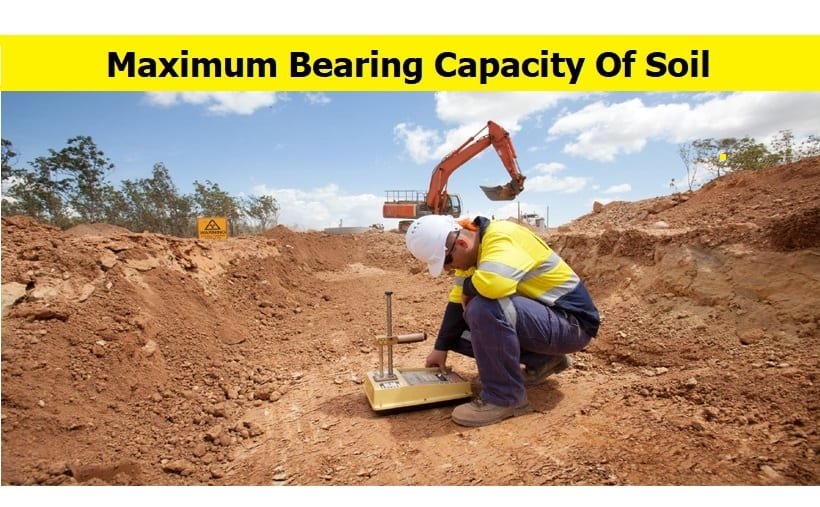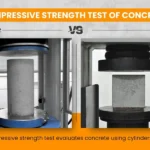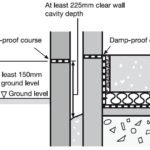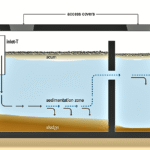Soil is the base of every construction. Understanding how much load it can safely carry is essential. This is known as the bearing capacity of soil. This article explains the topic in simple words, ideal for civil engineering students, freshers, and professionals.
What is Bearing Capacity of Soil?
Bearing capacity refers to the maximum load per unit area that soil can carry without failing.
In simpler terms:
- It is the amount of load you can safely put on the soil.
- If exceeded, the structure may settle, crack, or collapse.
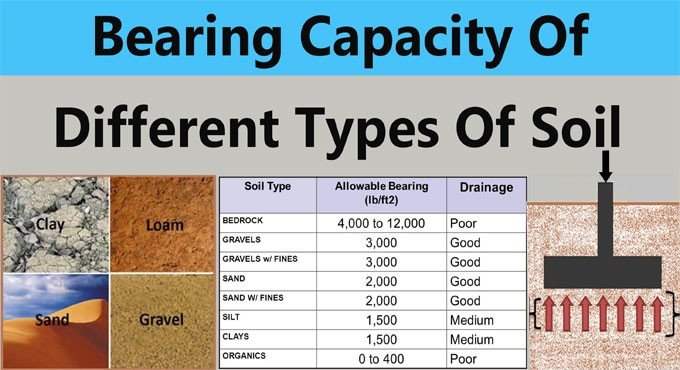
Types of Bearing Capacity
| Type | Explanation |
|---|---|
| Ultimate Bearing Capacity (qu) | Load at which soil fails completely |
| Net Ultimate Bearing Capacity (qun) | qu minus weight of foundation |
| Safe Bearing Capacity (q_safe) | Load allowed on soil with a safety factor |
Bearing Capacity of Different Soil Types in India
| Soil Type | Safe Bearing Capacity (kN/m²) |
|---|---|
| Hard Rock | 3300–6600 |
| Soft Rock | 440–2200 |
| Gravel | 250–450 |
| Sand (well graded) | 200–300 |
| Silt | 75–150 |
| Clay (soft) | 50–100 |
| Black Cotton Soil | 50 or less |
These are typical values. Site-specific soil testing is always recommended.
Also Read Civil Engineering Interview Questions – Guide for Indian Candidates
Methods to Determine Soil Bearing Capacity
1. Plate Load Test (IS 1888)
- Performed on-site.
- Steel plate is placed on the ground and loaded.
- Settlement is measured under increasing load.
2. Standard Penetration Test (IS 2131)
- Carried out inside boreholes.
- Gives the N-value, used to estimate soil strength.
3. California Bearing Ratio (CBR)
- Mainly for road subgrades.
- Gives strength relative to standard crushed rock.
4. Laboratory Tests
- Direct shear test
- Triaxial test
- Unconfined compressive test
Formula for Bearing Capacity (Terzaghi’s Theory)
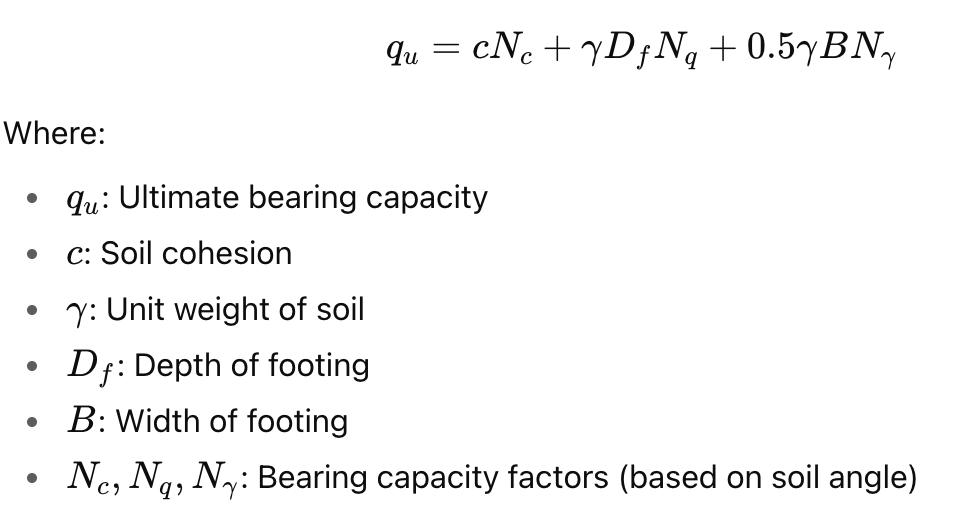
Factors Affecting Soil Bearing Capacity
| Factor | Effect |
|---|---|
| Type of soil | Gravel > Sand > Silt > Clay |
| Water content | Higher moisture lowers strength |
| Soil compaction | More compaction = better capacity |
| Depth of foundation | Deeper footings give higher capacity |
| Layered soil profiles | Weak layers can reduce total strength |
| Time duration of load | Long-term loads cause more settlement |
Safe Bearing Capacity Guidelines for Construction in India
| Structure Type | Minimum Safe Bearing Capacity (kN/m²) |
|---|---|
| Single-storey house | 100–150 |
| Two-storey house | 150–250 |
| Apartment buildings | 300 or more |
Note: Always confirm with site-specific soil testing.
How to Improve Bearing Capacity of Soil
- Compaction – Use rollers or compactors to compress soil.\n2. Stabilization – Mix lime, cement, or chemicals.\n3. Geotextiles or Geogrids – Reinforce soil and distribute load.\n4. Drainage system – Prevents water accumulation.\n5. Grouting – Fill soil pores using cement slurry.\n6. Soil replacement – Remove weak layers and fill with good material.
Relevance for Indian Construction
Soil in India varies a lot:
- Coastal areas: Sandy or silty, needs careful design.
- Plains: Alluvial soil, decent but can settle under load.
- Deccan Plateau: Black cotton soil is problematic. Expands in water, shrinks in summer.
This makes soil testing a must before building.
Key IS Codes for Soil Bearing Capacity
| IS Code | Description |
|---|---|
| IS 6403 | Guidelines for shallow foundation design |
| IS 1888 | Plate load test procedures |
| IS 2131 | SPT testing method |
| IS 1904 | Structural design of foundations |
| IS 1498 | Soil classification system |
Frequently Asked Questions
Q1. What is a good soil bearing capacity for residential buildings?
At least 150 kN/m² is suitable for a two-storey house.
Q2. How can I test the soil before construction?
You can perform a plate load test or standard penetration test with a licensed geotechnical engineer.
Q3. Why is black cotton soil risky?
It expands and contracts with moisture changes. This leads to cracks in the foundation.
Q4. Can we increase low bearing capacity soil?
Yes. Use methods like compaction, grouting, and stabilization.
Q5. What is the cost of a soil test in India?
It ranges from ₹5,000 to ₹25,000 depending on location and test type.
Conclusion
Understanding the maximum bearing capacity of soil is essential for the safety and durability of any structure. In India, where the soil varies widely by region, proper site investigation should never be skipped. Always rely on standard IS Codes and experienced engineers for foundation design. A little effort in the beginning can prevent big failures later.
